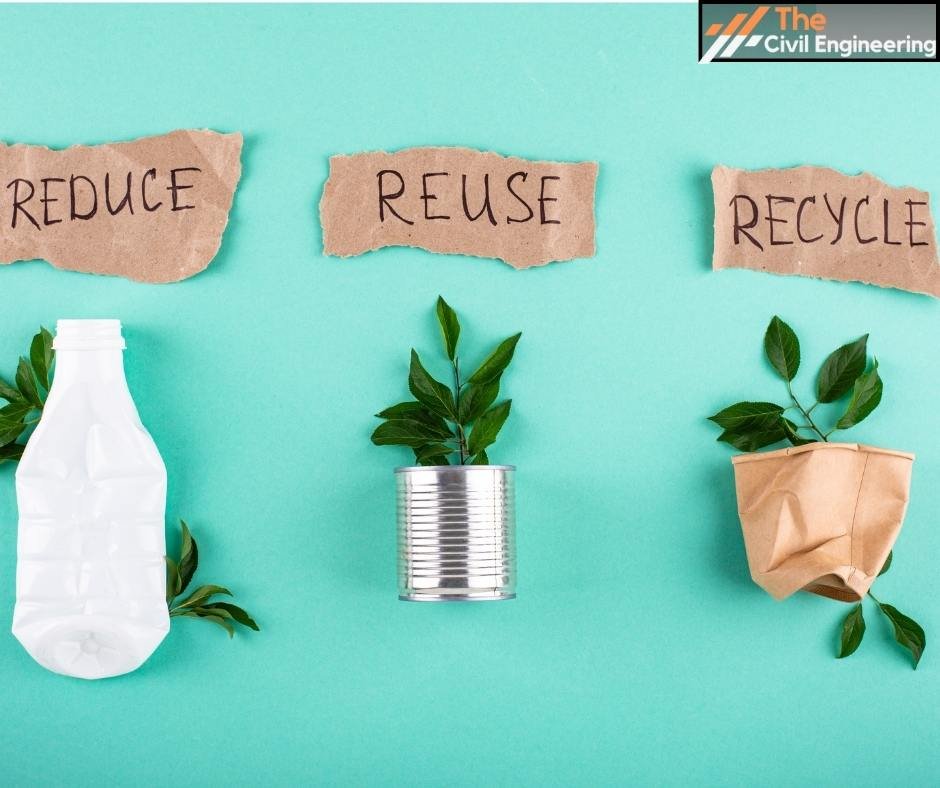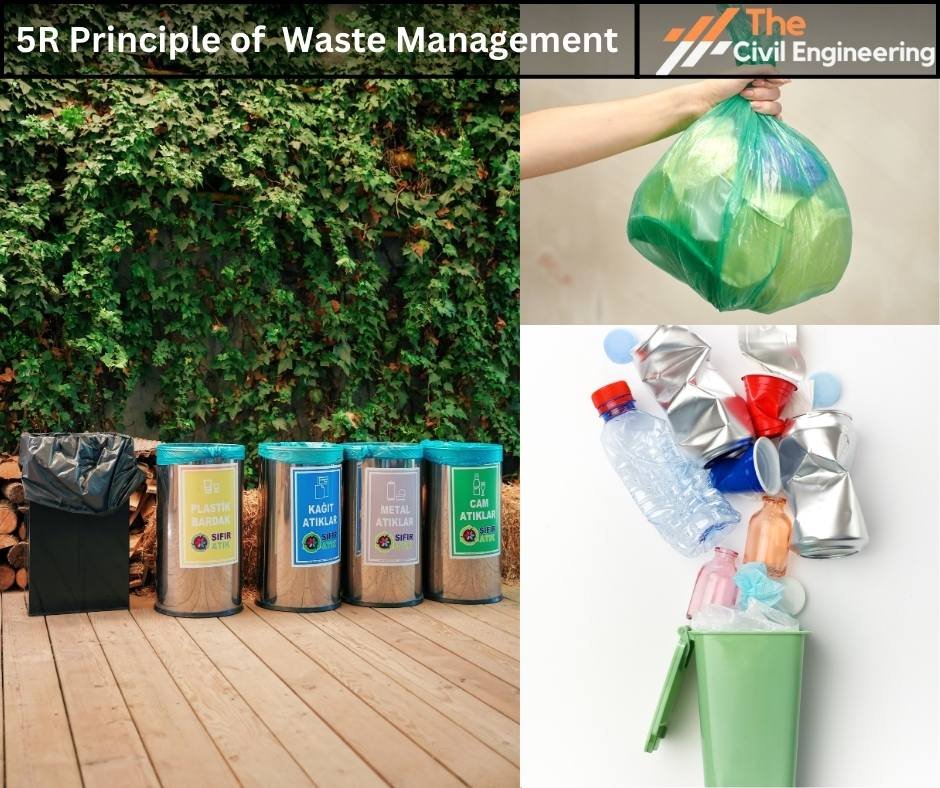The 5R Principle, which depicts reduce, reuse, recycle, recover, and refuse, is widely used in solid waste management.
Solid waste materials are useless materials that result from various human activities, including domestic trash, garbage, metal scrap, and more.
These materials have a direct impact on the environment, causing both land and water pollution.
With the increase in industrialization and urbanization, many waste materials are directly exposed to nature, harming plants and animals.
The World Bank has estimated that 2.24 billion tonnes of solid waste were generated alone in 2020. They also predicted this number would rise to 3.88 billion tonnes by 2050. 1
In today’s world, we rely heavily on ready-made and artificial products, resulting in increased soil waste and related problems.
To manage this unwanted solid waste, the 5R principle has been introduced.
1. Importance of the 5R Principle
The importance of the 5R principle are:
➤ To utilize the waste materials.
➤ To maintain environmental health.
➤ To minimize land and water pollution.
➤ To reduce consumption of needless items.
➤ To promote the use of degradable products.
➤ To utilize products to their maximum life.
➤ To refuse the unwanted use of items that reduce waste production.
2. 5R Principle Types
5R represents Reduce, Reuse, Recycle, Recover & Refuse. They are explained below:

a. Reduce:
Reduction includes all the activities that reduce solid waste generation in the environment.
We should always try to minimize the unnecessary use of artificial things or products in our daily lives.
We can reduce the solid waste in our community by considering the following points:
➤ We should choose durable items while buying.
➤We should change our habit of using things, i.e., use washable clothes and napkins instead of one-time usable napkins and paper.
➤Use washable containers for lunches.
➤Use sacks instead of using non-reusable plastic bags.
➤We should buy recycled products.
➤It is better to use cotton bags for shopping.
➤Print on both sides of a paper to reduce waste production.
➤Warning signs should be printed on products showing the disposal method.
➤Buy in bulk to reduce individual packaging.
➤Choose products with minimal or no packaging.
➤ Opt for digital documents instead of printed ones.
➤ Compost kitchen waste to reduce landfill contributions.
b. Reuse:
The usage of any product itself without changing its form and composition is called Reuse.
It is the act of re-claiming the product by using it for different purposes.
Reuse increases the life of waste and reduces the production of waste so that it preserves the environment & its resources.
Reusing products not only contributes to the protection of nature but also saves us money.
The initial cost of reusable products is high but is highly beneficial in the long term.
We can reuse solid waste by considering the following points:
➤Use reusable plastic bags or cotton bags for shopping.
➤We should donate our old clothes & other items to charitable organizations.
➤Use plastic gallons to store water & oil.
➤Use old (second-hand) books, DVDs & CDs, etc.
➤Buy a rechargeable battery.
➤Reuse electronic devices after repairing.
➤Reuse glass jars for storage.
➤Repair and refurbish old furniture.
➤ Refill soap dispensers instead of buying new ones.
c. Recycle:
Recycling is the use of waste by processing & modifying it into another form and giving it a second life.
It is done when it is not possible to reuse and reduce.
Paper & cardboard, glass, metal, debris from construction & demolition, etc. can be recycled and used again.
E.g.:
➤ Paper is recycled into cardboard, toilet paper, tissue paper, etc.
➤ The newspaper is recycled into egg cartons, shoe boxes, etc.
➤ Metals and plastics can be recycled to form new products.
➤ Recycle aluminum and steel cans.
d. Recover ( Repurpose):
Most of the materials thrown in the garbage can be used & processed in ways other than being destroyed. Such a process is recovering.
➤ Methane gas can be recovered from decomposing organic matter.
➤ If plastic waste remains left over after being reduced, reused, and recycled. It can be used to make energy. It converts waste products into resources (such as fuel, heat, etc.) through biological means.
e. Refuse:
We can refuse to use products that are harmful to the environment.
➤ Refuse to buy items packed in plastic.
➤ Refuse to buy one-time useable products.
3. Conclusion
As discussed in the article, we should follow the 5R principle to minimize solid waste production from our homes, societies, and countries.
Most people are unaware of the consequences of solid waste on our health, environment, and resources. So, we request you also make your family and society aware of the implementation of the 5R principle.
We should make the habit of collecting different solid waste in different dustbins or containers. Improper solid waste management is mainly seen in developing nations due to inappropriate waste-collecting techniques, and also, they are unaware of the 5R principle and its effectiveness.
Our team has worked in several solid waste management fields. Our experience shows that the 5R principle implementation reduces solid waste at the disposal point by 40% to 60%.
| Written By Er. Surakchya Gynawali |
| Verified By Er. Madhu Krishna Poudel |

